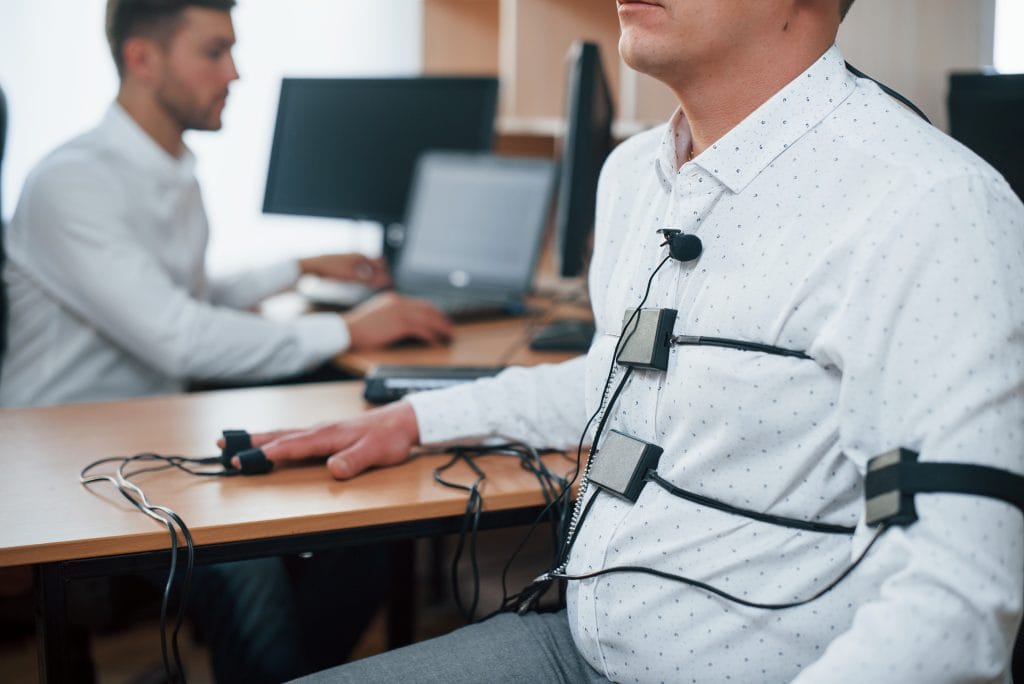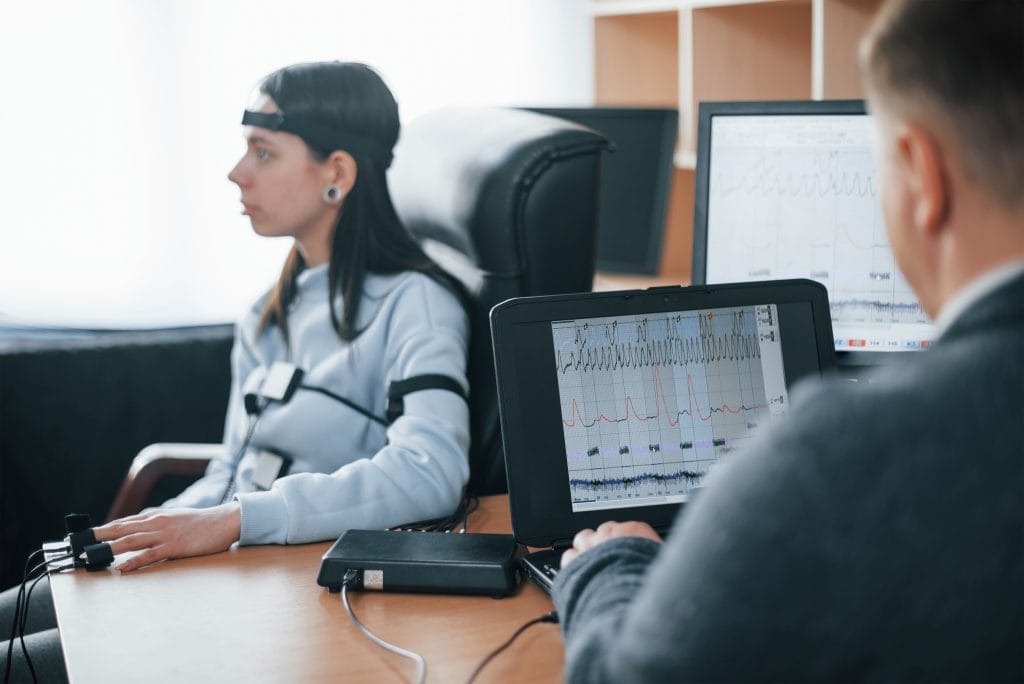In public opinion, the polygraph has gained the reputation of a device that always allows you to catch a person in a lie. We decided to check how true this opinion is.
In recent decades, law enforcement agencies, human resources agencies, and even jealous spouses have used a lie detector (the common name for a polygraph) to detect deception. The polygraph has appeared more than once in a variety of films: spy drama "Resident Error", comedy "Meeting the Parents", animated series "The Simpsons" etc. In talk shows (for example, "In fact" or "Detector") the characters undergo a polygraph test, and experts judge by their reaction whether the person is telling the truth or a lie. Research using a polygraph is legally voluntary, but you have to undergo testing every tenth employee in Russia. It’s not surprising that you can find advice on the Internet how to fool a polygraph.
Lying requires a lot of mental effort. In the study 2001 Scientists analyzed MRI (magnetic resonance imaging) images of the brain while participants were asked to tell the truth or lie in response to questions about their daily routine. It turned out that writing a deception required participants much more time than telling the truth, and that certain areas of the prefrontal cortex were activated. Scientists later discoveredthat during deception, three main areas of the brain are stimulated, which work together to control behavior, read external signals and monitor errors, allowing you to create a believable lie and appear natural.
Duke University psychology professor Dan Ariely in 2016 found that dishonesty can change the brain, making it easier to lie in the future. During the deception, the subjects showed a surge of activity in the amygdala, the part of the brain responsible for fear, anxiety and emotional reactions. But the more often people had to deceive others, the fewer signals came from the amygdala. It is logical to assume that the level of anxiety and physiological reactions during lying also decreases with regular practice.

They have been trying to detect lies using technical means for almost 100 years. In the USA they use a lie detector from the first half of the 20th century: for the selection of hired employees, personnel checks, exposing spies, solving crimes. In the USSR, the official use of the polygraph began only in 1975.
The polygraph is considered the main physiological method of lie detection. The device registers multiple signals from sensors that record a person’s breathing rate, heart rate, blood pressure, skin conductivity (sweat production), and movements of the arms and legs. Polygraph capabilities limited in that it relies on data from the activity of the peripheral nervous system, while deception is a cognitive act controlled by the central nervous system.
Taking a polygraph takes from one to three hours. During the study, the device keeps a continuous record of physiological activity, and an expert polygraph examiner interprets it. For example, during excitement, the pulse quickens, blood pressure rises, and sweat is released. But such reactions can occur in a person suffering from any disease or having physiological characteristics.
To determine the physiological norm of a particular subject, two approaches are used. In the so-called test of control questions a person is asked about events that relate to a specific crime and have nothing to do with it, but still force him to tell a lie. For example, most people, when asked “Have you ever deceived others?” they will answer “No”. And this will most likely not be true. Research shows that people are still not as honest as they want to think about themselves: about 60% of subjects may lie at least once during a ten-minute conversation, according to newer data, about 75% of people They lie about little things up to twice a day.
The basic assumption is that deception due to the stress of lying will lead to a measurable response in the form of increased sweating, heart rate, etc. However, it must be emphasized that the device does not record lies, but rather emotional arousal, which can be caused by a variety of reasons, not just guilt. According to the professor David Lykken, there is no specific physiological reaction characteristic only of deception.
The second approach is known as guilty plea test: It tests any knowledge related to the crime committed. The examiner measures the subject's response to specific questions, trying to determine whether the person actually knows about the event. This could be anything from knowing how many stab wounds the victim received to the color of the car the perpetrator drove off in. It is assumed that a person who lacks knowledge about an event will react approximately equally to correct and incorrect information because he does not know the truth. Meanwhile, the person who was at the crime scene will demonstrate a physiological reaction.

It was done some reviews polygraph efficiency. They made it possible to judge that polygraphs are accurate in 80–90% of cases. However, based on the data collected when testing students (namely, they most often acted as subjects), it is extremely difficult to draw a conclusion about the effectiveness of the polygraph in investigating crimes. In addition, the experiment participants did not know about ways to outsmart the device. In a review published in 2003 in the United States National Research Council, states that "when testing people not trained in countermeasures, polygraph tests can distinguish lies from truth to a level above chance, although well below perfection."
Polygraphs can give false positives: claiming that a person is lying when in fact he is telling the truth, and vice versa. David Lykken estimated the accuracy of polygraphs to be 85% for guilty people and 60% for innocent people. The fact that 40% of honest subjects are identified as dishonest by lie detectors can lead to serious consequences - from not getting a job to being labeled a serial killer.
The belief in the accuracy of the polygraph is largely based on a misunderstanding of the essence of its work. The device is extremely accurate in measuring physiological responses, but not in detecting actual lies.
Images: Freepik
Half-truth
1. Did Confucius say: “Find a job you love, and you will never have to work a day in your life”?
2. Is it true that psychosomatics does not exist?
3. Is it true that before a birthday the body is more susceptible to illness and injury?
If you find a spelling or grammatical error, please let us know by highlighting the error text and clicking Ctrl+Enter.






